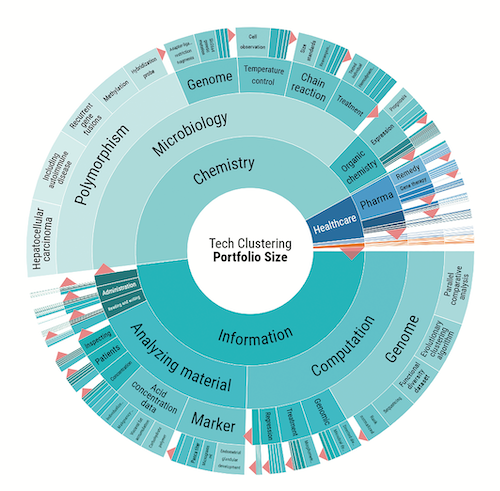- Get directions
- Leave a review
- Claim listing
- Bookmark
- Share
- Report
- prev
- next
- Tuesday, April 21, 2020 @ 10:00 am
A new study by the Swiss Federal Institute of Intellectual Property finds the number of biotech patents where Artificial Intelligence (AI) is a core feature is small. But this is only the tip of a much larger AI / biotech iceberg where AI is an important assisting tool of invention.

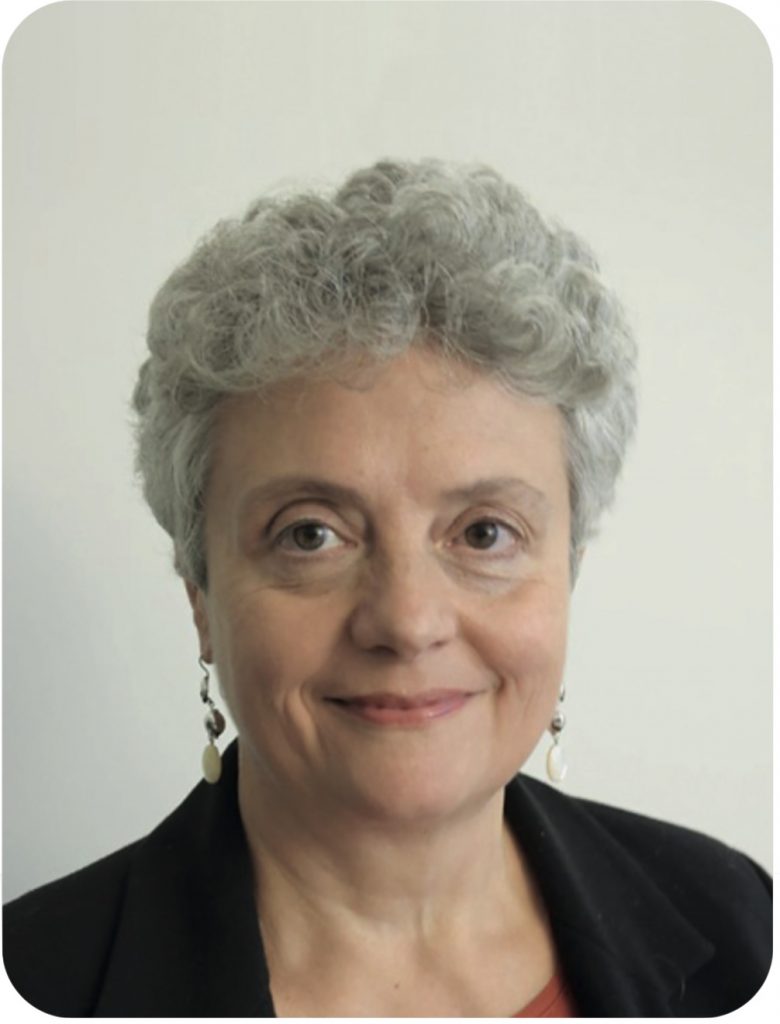
Christian Moser and Anna Maria Villa
Swiss Federal Institute of Intellectual Property | Patent Experts
The European Patent Office (EPO) defines a computer implemented invention (CII)1 as “one which involves the use of a computer, computer network or other programmable apparatus, where one or more features are realized wholly or partly by means of a computer program”.
AI patents on a growth curve
The EPO defines Artificial Intelligence2 (AI) as “reasoning and decision-taking by machines rather than humans or animals”. AI often implies an iterative training process (machine learning), which enables a machine to adapt to a specific problem before being able to take adequate decisions or propose interpretations autonomously. AI and machine learning often appear as synonym terms in the patent literature.
During the past decade, the number of patents relating to AI has grown exponentially, as documented in recent reports from both the WIPO (World Intellectual Property Organization) and the UK’s Intellectual Property Organization (UK IPO). Swiss AI patent volume is catching up with the slower growing biotech sector, reflecting a process of portfolio consolidation of the largest patent owners or big pharma (Figure 1).
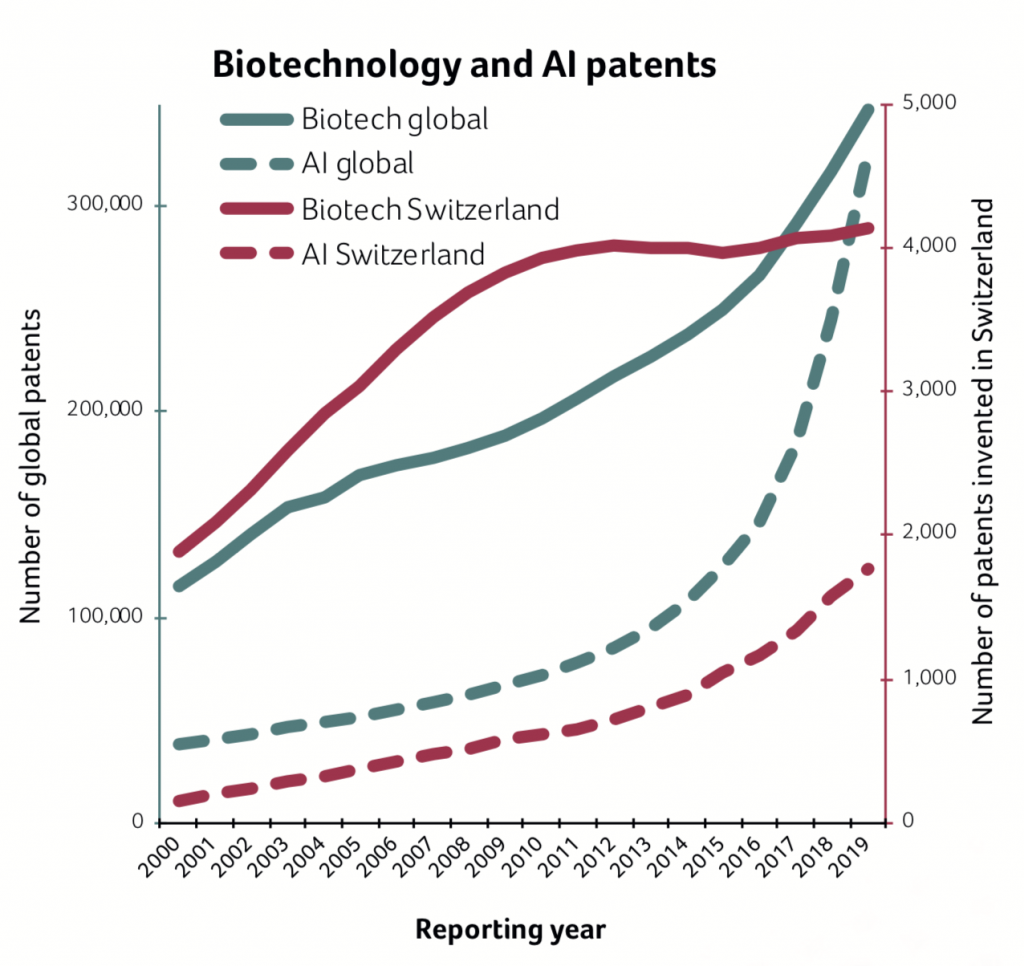
Figure 1: Biotechnology and AI Patents
The growth curve of Swiss AI patents (red dotted line) has experienced consistent growth, albeit not as fast as the global growth curve (dotted green line)
The growth curve of Swiss biotech patents (red solid line) has slowed since 2009 (mostly reflecting a process of portfolio consolidation of the largest patent owners)
(Graphs were generated using the patent analysis software PatentSight, see www.patentsight.com)
AI patents challenge the current IP system
Inventions involving CII, and AI in particular, challenge the current IP system in several ways. The issues center on patentability, ‘inventorship’, and ownership. Evidence of this can be found in the World Economic Forum 2018 white paper; Hu 2019;3 and WIPO’s decision in 2019 to launch a public consultation on AI and intellectual property.4
Most current patent laws and conventions require a patent application to designate a natural person as the inventor, thereby excluding AI. In a recent case, both the EPO and the UK IPO have rejected two patent applications, which explicitly declare an AI system as the inventor (see AI Inventorship Project in 2019 WIPO Magazine5 and EPO and UKIPO Refuse AI- Invented Patent Applications article in IP Watchdog 20206)
AI enhances the ability to collect, categorize, and analyze large datasets, to simulate complex processes, and/or to predict their outcomes. Thus, the classical topics of biotechnological patents offer attractive applications for AI: compound design/discovery, diagnostics, prognostics, or control of complex biological processes.
Biology was among the first areas of application for AI, and it continues to be an important topic (see Oliveira7 , Goh8, Shah9(2019) and Fuji (2017)10). A recent article on drug discovery proposes five levels of AI involvement, ranging from analytical assistance to entirely autonomous activity without human input (Table 1)
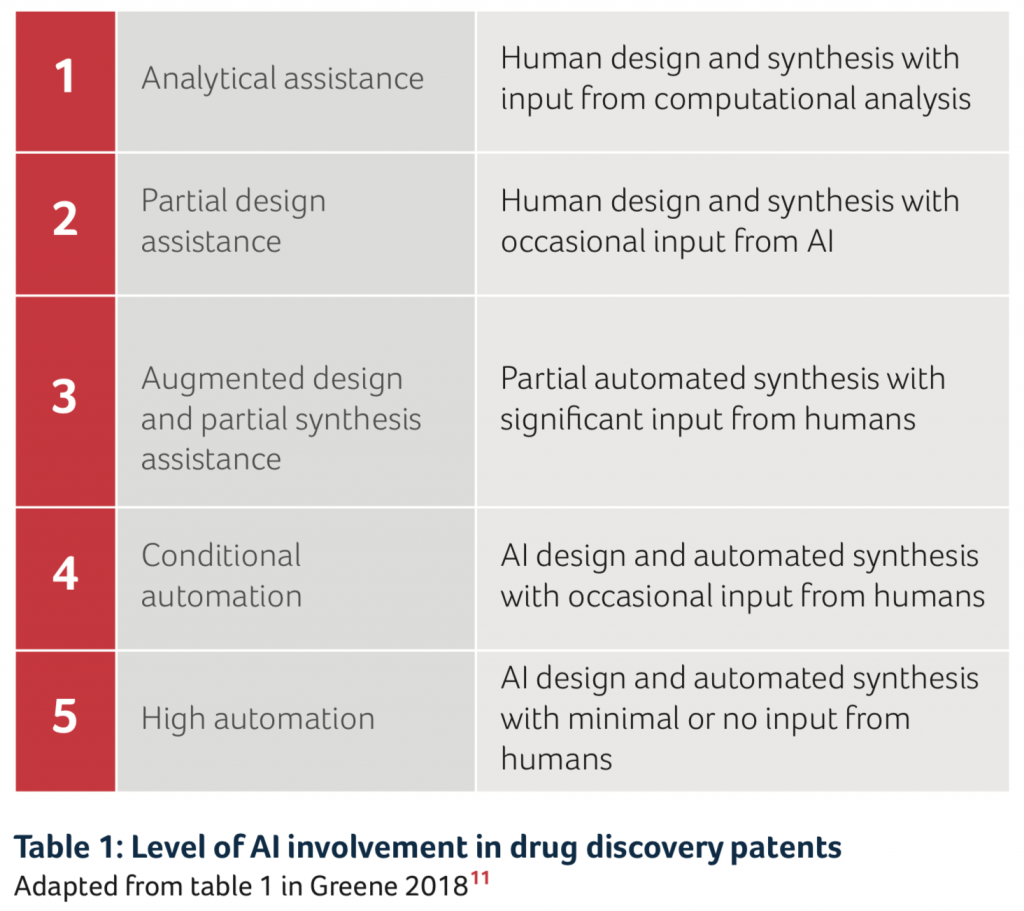
Patents: applying AI to biotechnology
In order to identify the patents disclosing AI applications in biotechnology, we created the intersection of two independent and comprehensive patent collections; one relating to AI/machine learning and the other to biotechnology. Each of them comprises more than 300,000 active patent families.
The overlap yielded 3,136 patent families, accounting for less than 1% of each parent technology field, and including 52 patents from Swiss inventors. Despite this small number, the contribution of Swiss inventors in this set is larger in proportion (1.7%) than in biotechnology (1.2%) or in AI (0.5%).
A Semantic Sunburst Graph (SSG) (Figure 3) provides an overview of the topics covered by the 3,136 documents. SSGs are created by automated text analysis algorithms, which qualify as unsupervised machine learning, i.e. AI.
Swiss performance in global context
Over the past 20 years, both global and Swiss-invented AI patents in biotechnology show similar growth curves. In contrast, the larger sets - biotechnology and AI - reveal very distinct dynamics for the global and the Swiss portfolios (Figure 1).
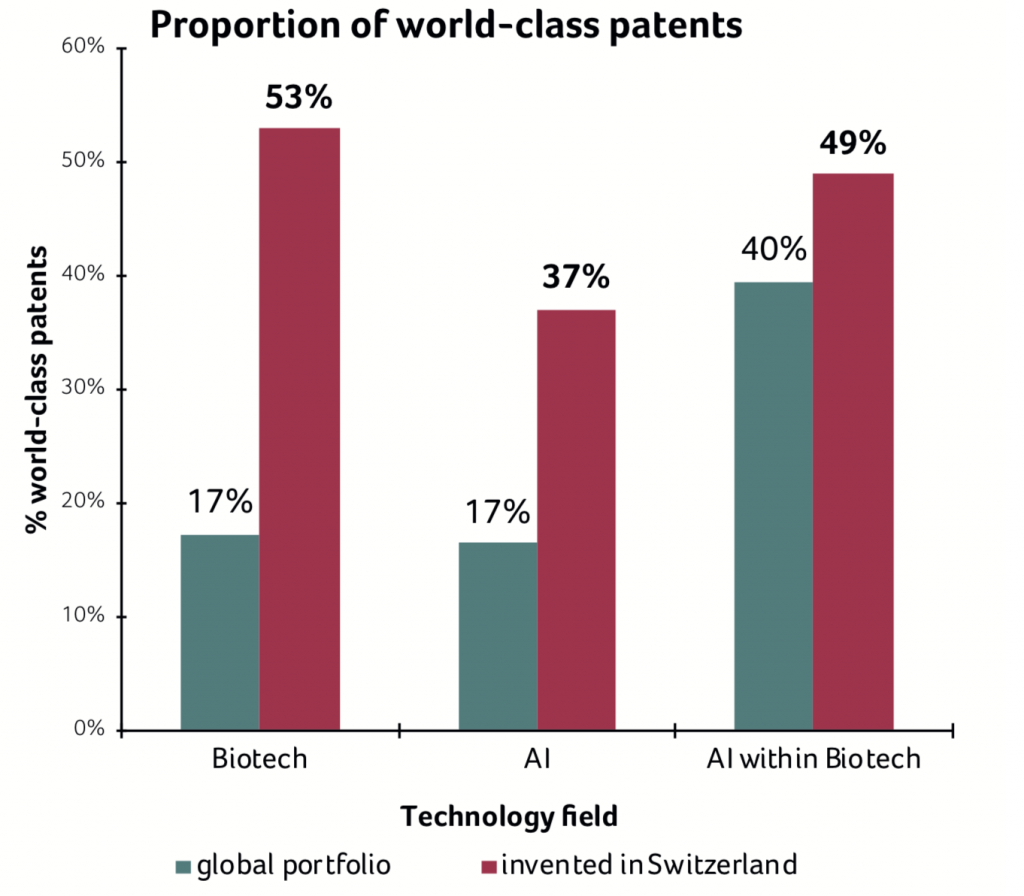
Figure 2: Proportion of world class patents
Bar charts 1-3 show a greater proportion of “invented in Switzerland patents” (shown in red) are world class in each of the three categories
Bar chart 3 shows 40% of global AI within biotech patents qualify as world-class, substantially more than in biotechnology o rAI alone (17% for both).This is true both globally (shown in green) and in Switzerland (shown in red)
With regard to patent quality, an impressive 40% of all AI patents in biotechnology worldwide qualify as world-class. This is substantially more than in biotechnology or AI alone, and close to the high values observed for patents invented in Switzerland (Figure 2), which have been presented in the Swiss Biotech Report 2018.
Notably, the majority of the patents of Swiss origin in all three sets are in fact international inventions, i.e. they designate inventors from Switzerland as well as from other countries. For 2019, the proportion of international inventions within the Swiss-invented portfolios are 77% in biotechnology, 62% in AI, and 74% for AI in biotechnology.
AI as an assisting tool in biotechnology patents
The overlap found between AI patents and biotechnology patents seems surprisingly small. However, this selection is restricted to patents in which AI represents a core feature of the invention, as illustrated by the examples in Table 1. These patents correspond to levels 4 and 5 according to the classification proposed by Green.11
Beyond these AI-centered biotech inventions, AI may have served as an assisting tool in many more biotechnology inventions. Accordingly, if the patents had not prominently disclosed the use of AI, the classifications and keyword concepts applied would have failed to capture them.
In conclusion, AI patents with biotechnology overlap for which AI is a core component are just the visible tip of a much larger iceberg of biotechnology-AI patents!
Figure 3: Technology Clustering of the intersection between AI and biotechnology patents (sunburst chart generated by AI-based semantic analysis)
The overlap between AI and biotechnology yields 3’136 patent families and is spread across a wide array of disciplines, from microbiology and polymorphisms to “information” and “computation”
References
1. EPO website Digital technologies (2019)
2. EPO website Artificial Intelligence (2019)
3. Hu, Shuijing; JIANG, Tao, Artificial Intelligence Technology Challenges Patent Laws. In: 2019 International Conference on Intelligent Transportation, Big Data & Smart City (ICITBS). IEEE, 2019. S. 241-244
4. WEF white paper: AI collides with patent law (2018)
5. WIPO public consultation on AI (Dec 2019)
6. EPO and UKIPO refuse AI-invented patent application (ip watchdog Jan 2020)
7. Oliveira, Arlindo L. Biotechnology, Big Data and Artificial Intelligence. Biotechnology journal, 2019, S. 1800613
8. Goh, Wilson Wen Bin; SZE, Chun Chau, AI Paradigms for Teaching Biotechnology. Trends in biotechnology, 2019, 37. Jg., Nr. 1, S. 1-5
9. Shah, Pratik, et al. Artificial intelligence and machine learning in clinical development: a translational perspective. NPJ digital medicine, 2019, 2. Jg., Nr. 1, S. 1-5
10. Fuji H, Trends and priority shifts in artificial intelligence technology invention: A global patent analysis (includes biological applications of AI) 2017
11. Green, Clive P.; Engkvist, Ola; Pairaudeau, Garry. The convergence of artificial intelligence and chemistry for improved drug discovery 2018
